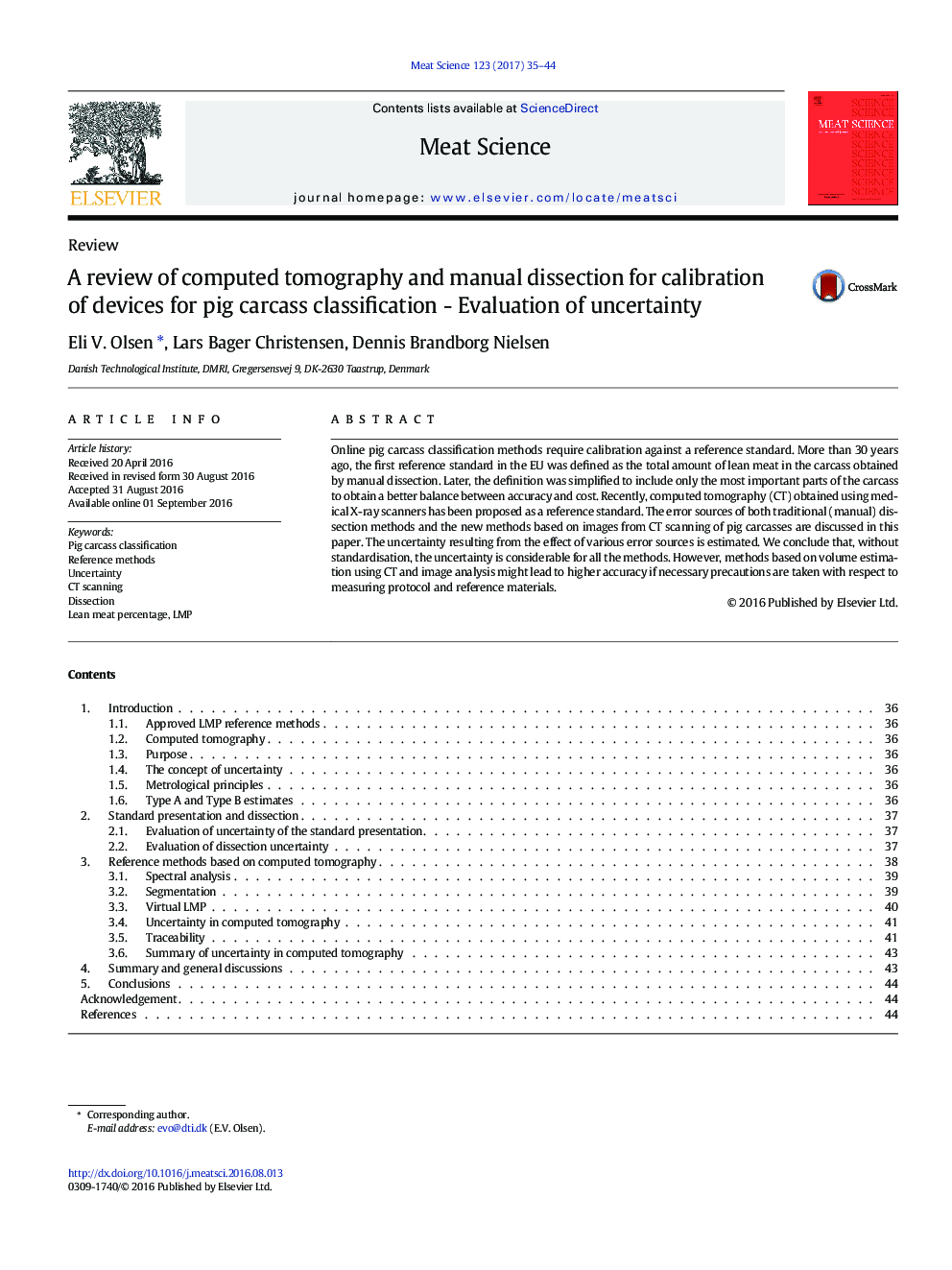| Article ID | Journal | Published Year | Pages | File Type |
|---|---|---|---|---|
| 2449288 | Meat Science | 2017 | 10 Pages |
•Investigation of reference methods for the calibration of online methods.•The uncertainty of dissection methods carried out by butchers.•Error sources are identified when using computed tomography (CT) as a reference method.•The uncertainty of virtual dissection using CT images is estimated.•Pros and cons of using the CT reference compared to the manual reference method.
Online pig carcass classification methods require calibration against a reference standard. More than 30 years ago, the first reference standard in the EU was defined as the total amount of lean meat in the carcass obtained by manual dissection. Later, the definition was simplified to include only the most important parts of the carcass to obtain a better balance between accuracy and cost. Recently, computed tomography (CT) obtained using medical X-ray scanners has been proposed as a reference standard. The error sources of both traditional (manual) dissection methods and the new methods based on images from CT scanning of pig carcasses are discussed in this paper. The uncertainty resulting from the effect of various error sources is estimated. We conclude that, without standardisation, the uncertainty is considerable for all the methods. However, methods based on volume estimation using CT and image analysis might lead to higher accuracy if necessary precautions are taken with respect to measuring protocol and reference materials.
